ISSN ONLINE(2319-8753)PRINT(2347-6710)
ISSN ONLINE(2319-8753)PRINT(2347-6710)
Satyanarayana Ch.G.1, Kishore Kumar M2
|
| Related article at Pubmed, Scholar Google |
Visit for more related articles at International Journal of Innovative Research in Science, Engineering and Technology
In this paper, research has been carried out pertaining to the influence of source of fly ash on compressive strength of concrete, due to the change in source both physical and chemical properties of fly ash has been carried out. It was found that the there was no influence of source on the three fly ashes collected for this investigation. The compressive strength of concretes in which cement was partially replaced with fly ash is presented.
Keywords |
| Fly ash, properties, workability, Compressive Strength |
INTRODUCTION |
| Fly ash has been procured from three different thermal power plants in India. The Fly ash samples collected were tested for their physical and chemical properties to identify the Class of Fly ash as per ASTM. The compressive strength of concretes made with fly ash is compared with the control concrete. The results pertaining to the compressive strength have been shown in table no. 5 & 6. |
II. MATERIALS USED |
| A. Cement Ordinary Portland cement of 53 grade with specific gravity of 3.15 has been used. The initial setting time and final setting time were found to be 33min and 315min respectively. |
| B. Fine Aggregate Locally available natural river sand passing through 4.75 mm I.S. Sieve with a fineness modulus of 2.97, and water absorption of 1.5% in saturated surface dry (SSD) condition was used. The specific gravity of the sand is found to be 2.57 and was confining to ZONE-III. |
| C. Natural coarse aggregate Crushed granite metal from local sources, passing through 20 mm and retained on 4.75 mm sieve was used as natural coarse aggregate. The fineness modulus of Natural Coarse Aggregate (NCA) is 6.48 and its water absorption is 0.94% in SSD condition. The specific gravity of coarse aggregate is found to be 2.65. |
| E. Water Potable fresh water available from local sources free from deleterious materials was used for mixing and curing of all the mixes tried in this investigation. W/C ratio is taken as 0.47 for M25 and 0.45 for M30 concrete. |
| F. Fly Ash The three fly ash samples were procured from three different thermal power plants in India. To identify the influence of source the physical and chemical properties were tested as Bureau of Indian Standards. The physical properties of the tested samples of fly ash as per IS 3812-Part 1, 2003 are given in table 1. The chemical properties of the tested samples of fly ash as per IS 3812-Part 1, 2003 are given in table 2. The collected fly ash samples represent the Class F Fly ash as per ASTM classification of fly ashes. |
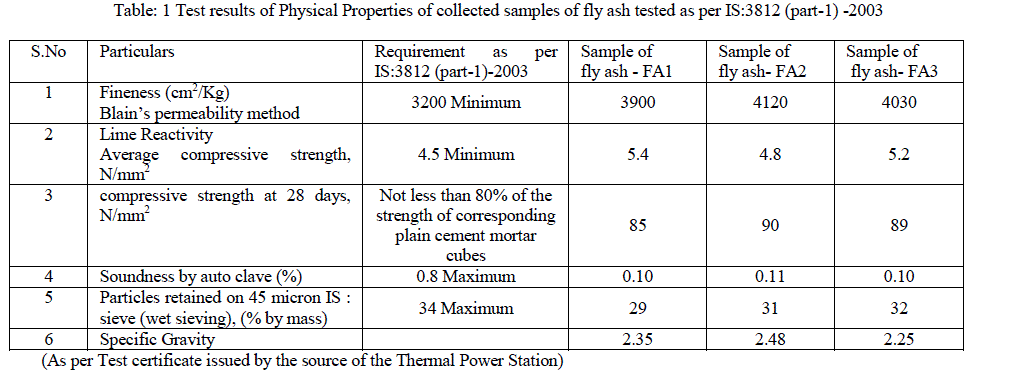 |
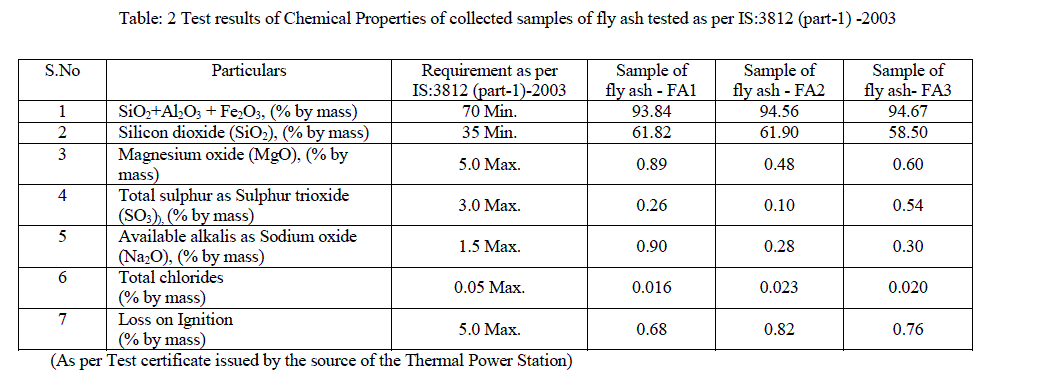 |
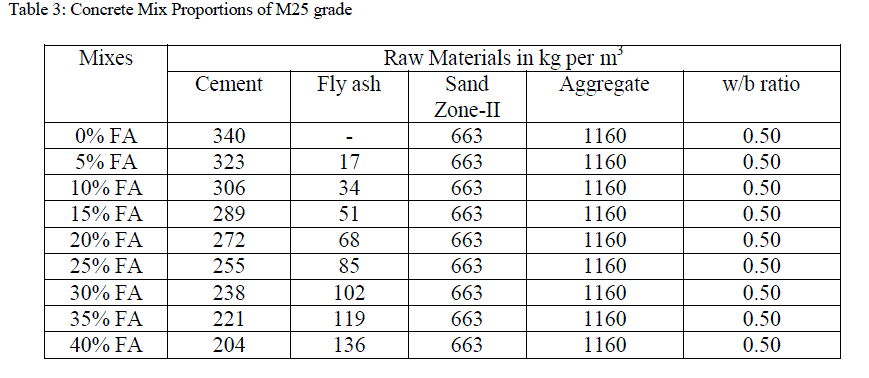 |
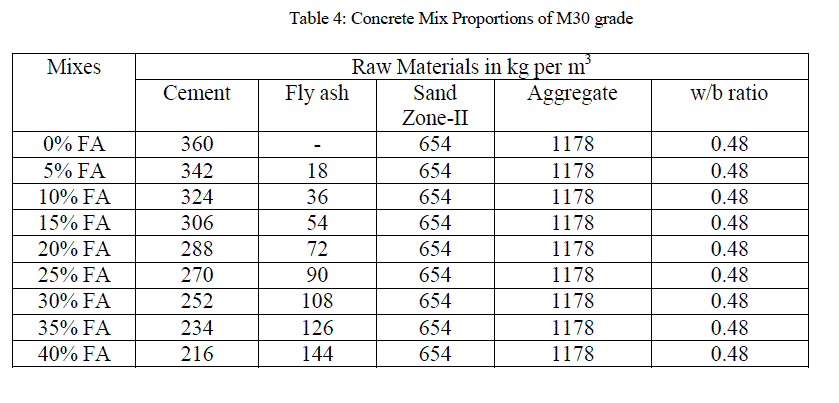 |
III. EXPERIMENTAL DETAILS |
| The concrete specimens were made with fly ash of different replacement of cement. The compressive strength of two different grades M25 and M30 were casted. The specimens of 150x150x150 mm cubes were used for the Compression test. Three specimens were tested for the required age and mean value were taken and reported. The compressive strength of concrete mixes at28 days were shown in tables 5 and 6. Table: 5 Compressive strength of specimens at 28 days made with fly ash obtained from three different power plants of M25 grade of concrete |
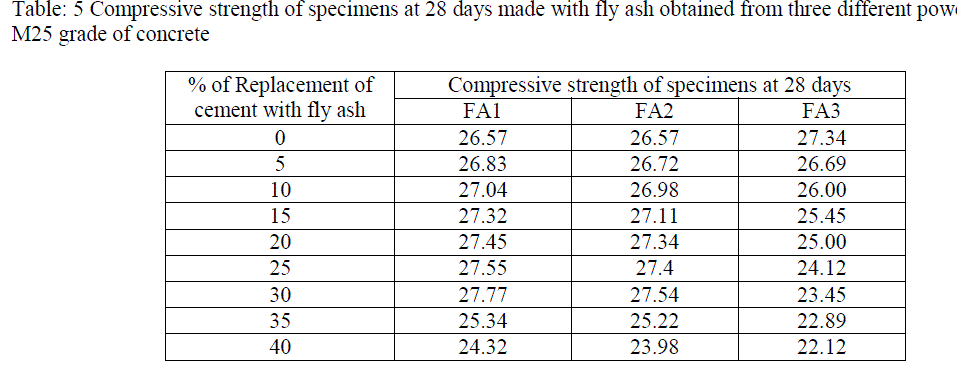 |
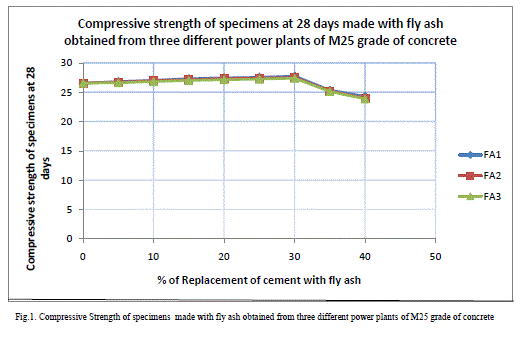 |
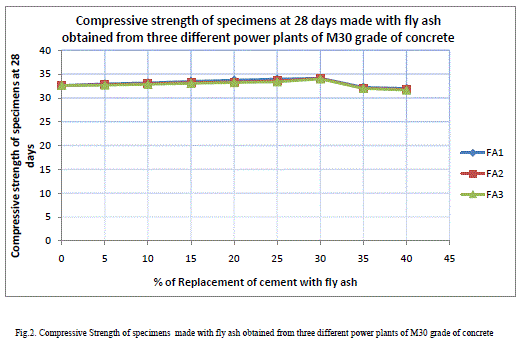 |
IV. CONCLUSIONS |
| 1. The fly ash samples collected were satisfying the requirements of Bureau of Indian Standards in both physical and chemical characteristics. |
| 2. From the above graphs and tables, it was observed that the there is not much difference in compressive strengths of concrete mixes made with fly ash obtained from three different sources. |
References |
|